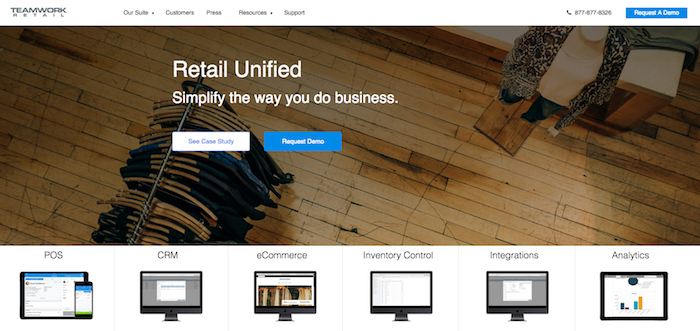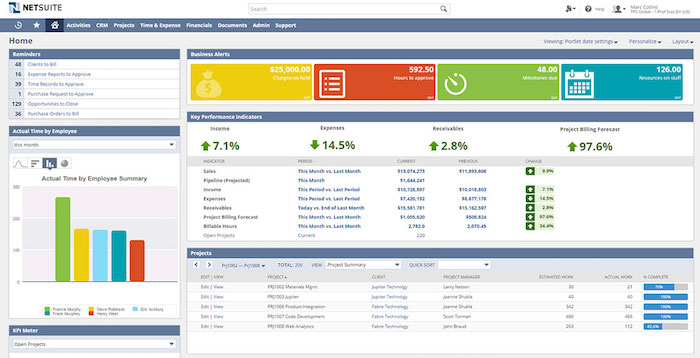ERP & Ecommerce Integration: 6 Things to Know

Technology has reinvented the retail experience for consumers; at the same time, it can transform retailers’ internal operations, especially through ERP and ecommerce integration. When an ERP (enterprise resource planning) program pairs successfully with a merchant’s ecommerce platform, the technologies can share key data and optimize the entire retail operation.
Yet, the ERP and ecommerce integration process can’t be done hastily. At Command C, we often guide our clients through asking the right questions in order to determine the most appropriate ERP for them. There is a lot to think about. To give retailers a sense of where to begin, here’s a quick start guide of the 6 things to consider when planning an ERP integration with your company’s ecommerce platform.

1) No one knows your business like you do.
The Command C team works often with a variety of ERPs and ecommerce platforms. That said, despite our expertise, we won’t cherry pick an ERP for a retailer. Why not? Because no one knows the retailer’s business like they do.
Our role is to help you ask the right questions. The first step in the process is to think deeply about the optimal lifecycle of your products–from the manufacturing line (or procurement) to the moment it arrives at the buyer’s house. Work with your team to outline how every step of the process works now, plus how these steps could be improved in the future. For instance, identify opportunities for automation by asking yourself whether work is being duplicated or whether certain tasks come with a high risk of human error.
You want to begin the process of selecting an ERP with a full understanding of what is working and what is not. Also, is there any part of the current process that must stay in place? Or is everything up for reexamination?
2) What data needs to be shared across systems?
Though every organization has different structural requirements and constraints, we recommend that retailers work towards establishing an operational structure that resembles a wagon wheel. In this structure, their ERP is the hub and single source of truth for all the data shared by various systems that exist at the edge of the wheel. Examples of these systems include ecommerce, marketplaces like Amazon, point of sale, warehouse management, suppliers, etc. Updates made within the ERP are communicated outward to each channel. In turn, that channel may share some data directly with other channels, and communicate information, such as order data, back into the ERP for fulfillment and further processing.
Visualize what data that main hub needs to hold. For most merchants, this data encompasses products and product details, customers, inventory management, and orders. But sometimes a company need to fold more into their essential data. Is this the case for your business?

3) How do you plan to track inventory?
As Thomas Marks from Stitch Labs, a standalone inventory management tool, says, “For retailers, the largest capital investment is inventory.” Plus, your customers’ expectations are based on your inventory–will you have what they want, when they want it?
Some questions to consider when you’re thinking about inventory management include:
- Are you selling through multiple channels, e.g. your own branded site, Amazon, retail store/POS, etc? If so, how do you want the channels to talk to one another?
- Do you sell wholesale and retail?
- How do you want the system to communicate inventory updates? Who needs to know?
4) How will you manage warehouse operations/order fulfillment?
Just like more retailers are selling inventory through multiple channels, so they’re also fulfilling orders from various warehouses. If this is true for your business, what criteria determine the warehouse, e.g. inventory or geographic location? Additionally, think about the answers to questions like these:
- Does your warehouse staff need the ability to scan barcodes on product orders?
- Do you want to ability to partially fulfill orders, while offering backorders or preorders on some products?
- Does order status information need to be communicated back to the sales channel?
- Does shipment tracking information need to be communicated back to the customer via the sales channel through which they purchased?
- Do you have any special shipping requirements? What are your shipping rules/rates?

5) Purchasing: How will you track orders to your suppliers?
The line of thinking here is similar to order fulfillment, only it’s directed from you to your supplier. So, for example, regarding purchasing, we want to know the answers to questions like:
- How do you want to be notified when you need to order more product from a supplier?
- Do you want to automate orders with your suppliers?
- When you get a supplier delivery, how will the products be accounted for and added to your sales channels?
- Do you need a solution for creating/issuing purchase orders?

6) What reports do you want to see?
At Command C, we’re advocates for analytics. When retailers track their KPIs (key performance indicators), they unlock the information they need to grow their business. Additionally, there are other reports, like a Profit & Loss statement, that business owners need to keep current.
So, with regards to your analytics, KPI tracking, and more here are some sample questions to help guide your thinking:
- Will your ERP integrate with your accounting program to produce a P & L and other reports?
- Should your employee payroll tracking be included within the ERP?
- Do you want to run reports on specific popular products, esp. compared to last year’s sales?
- Do you have any additional reporting needs? (example: sales tax, stock movements, returns)
Think about all the kinds of reports you and your team want to review on a regular basis, even if these reports are not currently a part of your process. This is the moment to clarify the information you want to know about your business moving forward.
In conclusion
These 6 considerations form the basis of the plan to integrate an ERP with your ecommerce platform. Without knowing the answers for your business, it will be impossible to develop a strong plan for this process. And most importantly, without a plan, it will be impossible to have a successful ERP/ecommerce integration process.
Additionally, your input here is so important because there isn’t a blanket solution to retail operations. The final solution will address the unique needs of your business. Some companies will grow through using only a couple of ERP components, such as inventory management and fulfillment. Other companies will want something comprehensive, like an ERP that includes CRM (customer relationship management), along with all the other aspects highlighted here.
At Command C, we can make anything work. We’ve dealt with all kinds of ERP and ecommerce integrations–we’ve integrated new ERPs into longstanding ecommerce platforms, as well as migrated to ecommerce new platforms while connecting an existing ERP. And that’s just for starters. So long as an ERP has an API, and we can connect to it, we can integrate it with your site’s platform. Developing custom solutions for retailers is some of our favorite work.
